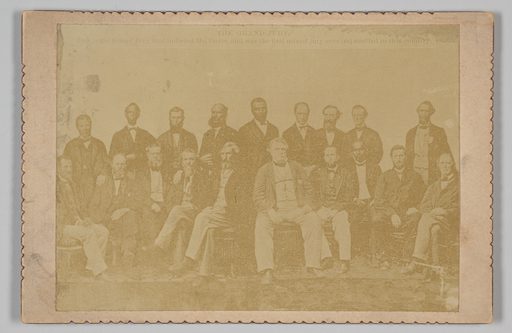Introduction
In the heart of Alexandria lies the inspiring story of George Lewis Seaton, a man whose resilience, determination, and profound impact shaped the city’s history. His life is a testament to the indomitable spirit of African Americans during the challenging post-Civil War era. His legacy, especially in the Hayti Neighborhood (pronounced haytie), remains a beacon of inspiration for all who tread the streets of Alexandria.
From Humble Beginnings to Leadership: The Story of George Lewis Seaton
Born free in the 1820s in what was then the District of Columbia, Seaton’s early life was rooted in Alexandria. His parents, George and Lucinda Seaton were free blacks believed to have once been enslaved at the iconic Mount Vernon. Despite the societal challenges of his era, Seaton was not to be held back. He learned to read and write and meticulously honed his skills as a carpenter.
George Lewis Seaton’s Home in Hayti: A Symbol of Success
The Hayti Neighborhood of Alexandria cradles a significant emblem of Seaton’s achievements: his residence at 404 S. Royal Street. More than just a dwelling, this house is a testament to Seaton’s stature and success within the community. The neighborhood, with historical houses dotting the 400 block of South Royal and the 300 block of South Fairfax Street, whispers tales of a rich past. Among these tales is the story of the Wilkes Street Tunnel. Initially constructed for the Orange and Alexandria Railroad between 1851 and 1856, it transitioned from serving railroad traffic to welcoming pedestrians and cyclists, offering them a window into history.
In recognition of its historical significance, the George Lewis Seaton House was proudly added to the Virginia Landmarks Register and the National Register of Historic Places in the early 2000s.
George Lewis Seaton’s Impact on Alexandria and Beyond
Seaton’s influence wasn’t confined to carpentry. He ventured into the political arena, attending Republican Party meetings, gracing conventions, and even securing a seat in the House of Delegates in 1869, representing Alexandria. Seaton was also a grand jury member that indicted Jefferson Davis, adding another layer to his multifaceted contributions to history.

George Lewis Seaton’s Role in Building Alexandria’s Schools
But his heart was always with the community. He was instrumental in building schools for African Americans and proudly served as a trustee of the First Free School Society of Alexandria. His craftsmanship, a testament to his dedication, can be seen across Alexandria. Seaton’s touch is evident from municipal buildings to the Odd Fellows Hall, the latter of which is listed on the National Register of Historic Places. Throughout his life, he remained a fervent advocate for education, championing equal rights and opportunities for African Americans.
Where is George Lewis Seaton Buried? The Mystery of His Final Resting Place
For all his contributions to Alexandria, the final resting place of George Lewis Seaton remains a mystery. While many believe he is buried in Trinity United Methodist Cemetery, part of the Wilkes Street Complex, others speculate that he could be interred at Union Cemetery. However, no official records confirm his burial site.
Despite this uncertainty, George Lewis Seaton’s impact is deeply felt across Alexandria. George Lewis Seaton’s contributions to education, politics, and the Hayti Neighborhood continue to inspire future generations. Walking past 404 S. Royal Street, one can almost hear the echoes of the past—reminders of Seaton and the trailblazers who shaped the city’s future.
The Enduring Influence of George Lewis Seaton in Alexandria Today
George Lewis Seaton’s journey from a free black child in the 1820s to a pillar of Alexandria’s community is a story of perseverance, education, and unwavering commitment to the betterment of society. His legacy in the Hayti Neighborhood and beyond serves as a beacon, inspiring future generations.
Sources of Information
Alexandria Times. (2021, April 29). Hayti: One of Alexandria’s first African-American neighborhoods.
Bernstein, P., et al. (2001). The life and times of George Lewis Seaton. Alexandria Archaeology Publications (No. 121). (Printed 2003).
Pippenger, W. E. (1992). Tombstone inscriptions of Alexandria, Virginia: Volume 1. Family Line Publications.
Pippenger, W. E. (2014). Tombstone inscriptions of Alexandria, Virginia: Volume 5. Heritage Books.
Virginia MLK Commission. (n.d.). Biography of George Lewis Seaton. Retrieved September 11, 2023.